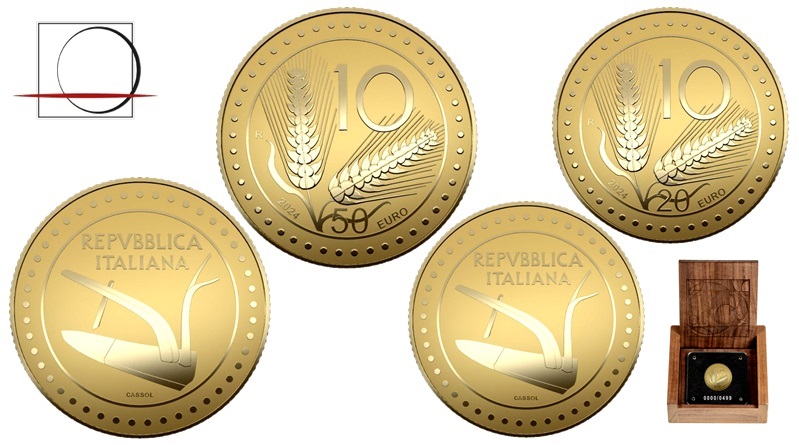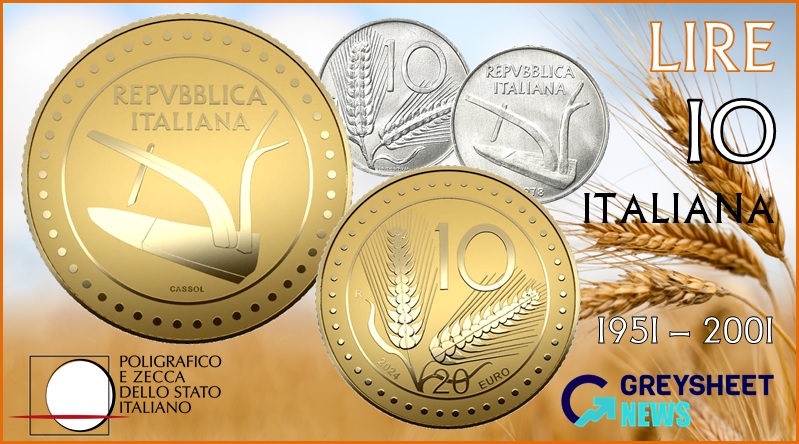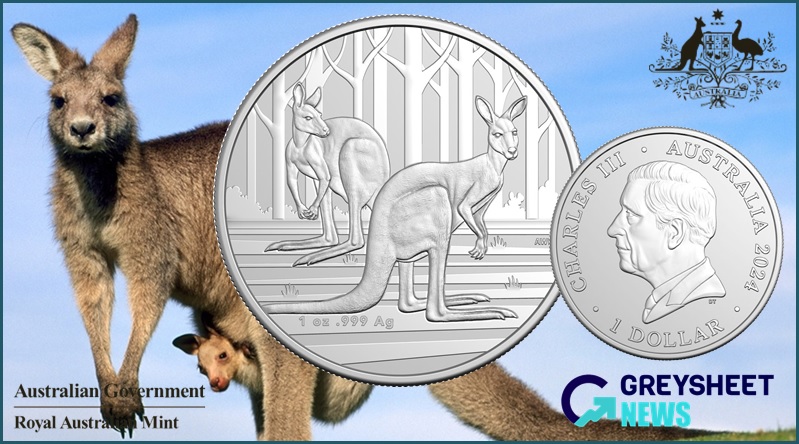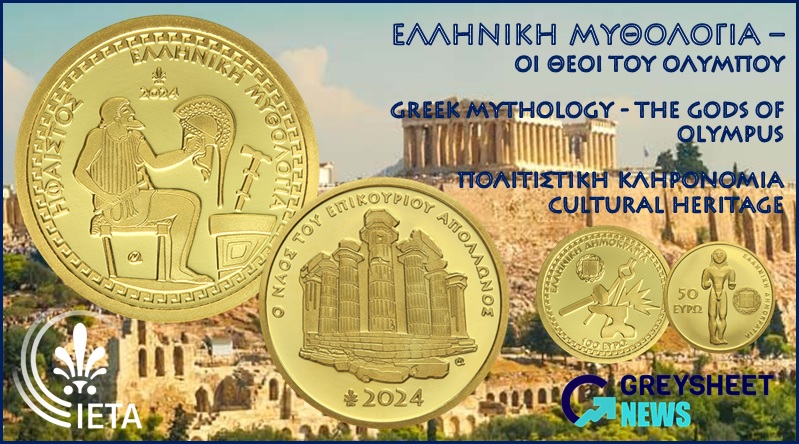Italy: New Gold Proof Coins Released In Continuing Tribute To Italian Lire Legacy Coinage
Italy’s IPZS release their latest gold collector coins which are part of their popular series entitled la riedizione della lire.
The Italian Lira was the national or official currency since unification of the Italian kingdoms and states in 1861 under the crown of Savoy and the King of Sardinia. However, it had use in several Italian states before unification as the Lira was introduced by the Napoleonic Kingdom of Italy in 1807 and at equal exchange with the French franc. Subdivided into one hundred centesimi, the currency became a founding member of the Latin Monetary Union along with Belgium, France and Switzerland in 1865 with Greece joining in 1867. Emerging from the First World War, the Lira could no longer adhere to the exchange rates of the Latin Monetary Standard and as a consequence, the currency’s value against the US Dollar was devalued from 5.18 to an official set rate against the dollar at 19 lira in 1927. During the Second World War, the Lira suffered further devaluation with an exchange rate of 120. At the end of the war, Italy emerged as a Republic in 1946 and with a currency linked to the Bretton Woods System and the dollar at a set rate of 625 by 1949.
New coins of one to ten Lire of the Republic were first released in 1946 and omitted any centesimi denominations. Bank of Italy banknotes in values of 500 to 10,000 lire were issued between 1947 and 1948. Treasury banknotes of 50 and 100 lire were later released in 1951 and which were then replaced by coins of the same value. The smallest value coins, one to ten lira were minted in aluminium and were later joined in 1954 by 50 and 100 lire coins minted in stainless steel chromium. 20 lire coins were introduced into circulation in 1956 minted in a bronzital alloy and in 1958, silver coins of 500 lire were released. As a result of inflation, a monetary plan known as the lira nuova was proposed in the early 1970’s. The plan involved recalibrating the lira at 1000 old lira to one new lira, thus removing three zeroes from their calculation. Although the project remained dormant for several years, calls for it to be revived by the public and various members of government and business leaders put the topic in the forefront of national debate in 1984. Despite persistent heavy inflation and procrastination in government, the lira nuova was permanently abandoned in 1991 because of plans for a single European currency. In 1998, the newly established European Central Bank set irrevocable exchanges for the currencies of the countries participating in the Euro with the lire set at 1936.27 equalling one Euro. In 1999, the European Union’s single currency was given virtual status and in 2002, physical banknotes and coins were placed in circulation throughout the Euro-zone’s twelve member states. Thus, the 141-year history of the Italian Lira came to an end.
Launched in 2020, la riedizione della lire focuses on the second series of Italian coinage first released in 1951 and pays tribute to the 10 Lire denomination as the fourth design. Created by veteran Italian medallist and sculptor Giuseppe Romagnoli (1872 - 1966), the obverse side includes an image of a plow, the motif is representative of the country’s many agricultural industries. Placed above the primary design is the horizontal text REPUBBLICA ITALIANA and below is the year of minting. The reverse side features two ears of wheat stalks, detailed in their design and symbolising Italy’s tradition and history of ample food production. Superimposed and placed to the centre right is the bold numeral 10 without reference to the currency name.

The gold 20 and 50 Euro proof quality coins are in tribute to the iconic and timeless charm of the 10 Lire coins, one of the longest-running Italian coin series that spanned the history of the Italian Republic from 1951 to 2001. The original design is recreated on both 20 and 50 Euro reverse proof coins by IPZS engraver artist Maria Angela Cassol. Featured on the obverse of both coins is the original design found on the 10 lire coins which were first issued in 1951, a plough positioned towards the lower half with the text REPUBBLICA ITALIANA placed above. As an additional element to the design, the original motif is framed with a beaded border. The reverse side replicates the design included on the legacy coins depicting two stalks of wheat and a bold numeral 10. To the left side of the left wheat stalk is the mintmark R denoting the Mint of Rome. Added to the lay-out is the year 2024 and the denomination 20 or 50 EURO placed below the primary design. The overall design is also framed with a beaded border with a reverse proof strike utilised for both denominations.
| Denomination | Metal | Weight | Diameter | Quality | Mintage Limit |
| 20 Euro | .999 Gold | 7.77 g. | 22 mm. | Reverse Proof | 999 |
| 50 Euro | .999 Gold | 15.5 g. | 28 mm. | Reverse Proof | 999 |
Available from the 18th September, both options are specially encapsulated and presented in a hardwood matte-polished case accompanied with a certificate of authenticity. Each coin is available as a separate purchase. For additional information, please visit the e-webshop of the IPZS.

Download the Greysheet app for access to pricing, news, events and your subscriptions.
Author: Michael Alexander













Please sign in or register to leave a comment.
Your identity will be restricted to first name/last initial, or a user ID you create.
Comment
Comments